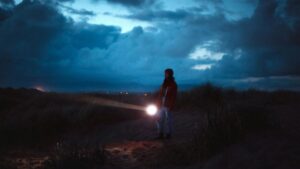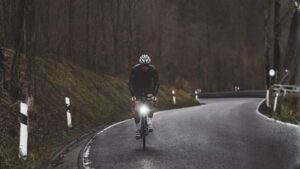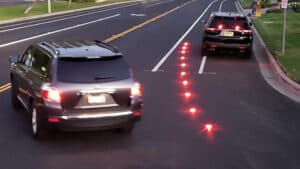To successfully source headlamps, you must first understand your customer’s specific needs. Identify the use (camping, trail running, industrial work, emergency prep), then prioritize the specs that matter: brightness, beam type, battery system, weight/fit, and durability.
Choose suppliers who deliver consistent quality, clear test data, and reliable fulfillment. Get samples, check certifications, and confirm warranty and logistics before committing.
*If you don’t have time to read the whole guide, contact us directly to discuss your needs and get a tailored recommendation.
Understanding Customer Needs
To source headlamps that people will love, you need to nail down three things: what they’re using it for, which features matter most, and how much they want to spend.
Identifying Use Cases
Every activity has its own headlamp wish list. Camping fans usually look for brightness around 100-300 lumens and batteries that last for days.
Trail runners? They want super-light models (under 3 ounces) with secure straps and red lights to keep their night vision sharp.
Industrial workers have a different set of needs—think safety certifications and intrinsically safe ratings for risky environments. Construction pros need headlamps that can take a beating and flood beams for up-close work.
Some customers are prepping for emergencies, so they want headlamps with a long shelf life, flexible power options, and controls that are dead simple when stress hits. Hunters and fishers often prefer colored lights—red or green—so they don’t scare away anything with fur or fins.
If it’s for home repairs, people usually want rechargeable headlamps with magnetic bases and adjustable beams. The use case really shapes everything: how bright, what kind of battery, and how tough the headlamp needs to be.
Assessing Desired Headlamp Features
Brightness is usually the first thing people ask about. For simple chores, 50-150 lumens is fine. Outdoor die-hards want 200-600 lumens and a few different brightness modes.
Battery systems split your customers. Frequent users love the convenience of rechargeable lithium-ion. If they’re only using the headlamp occasionally or for emergencies, they’ll probably go for disposable batteries.
Weight is a big deal for some, not so much for others:
- Ultralight backpackers: Under 2 ounces
- Campers: 2-4 ounces is okay
- Work use: Durability beats weight
For outdoor use, water resistance is non-negotiable. IPX4 is enough for rain, but IPX7 means it can take a dunk. Beam patterns matter too—spot beams for distance, flood beams for a wide view, or a combo if they want the best of both worlds.

Determining Budget Constraints
Price matters, but it depends on the customer and how many they’re buying. Basic headlamps are $15-30—good for casual users. Mid-range ($30-80) draws in regular outdoor folks who want quality without breaking the bank.
Pro headlamps ($80-200+) are for industrial users, hardcore adventurers, and anyone needing special certifications. If you’re selling in bulk—like to a company—volume discounts can make a big difference.
Customers weigh features against price. Some will trade brightness for longer battery life if it saves money. Others want the latest extras—gesture controls, app connectivity, modular add-ons—and are willing to pay up.
Warranty coverage can tip the scales, especially for higher-end models. Commercial users, in particular, want to know they’re covered if something goes wrong.
Key Headlamp Features to Consider
Getting into the nitty-gritty specs and comfort features is how you find headlamps that really fit your customers. It’s all about the right blend of brightness, beam style, power options, and fit.
Brightness and Lumens
Lumens tell you how much light you’re getting. Entry-level headlamps usually hit 50-200 lumens—plenty for reading or setting up a tent.
Mid-range models jump to 200-800 lumens, which is great for hiking and general outdoor stuff. If someone’s climbing at night or doing search and rescue, they might need 800-2000+ lumens.
Brightness Categories:
- Basic: 50-200 lumens
- Outdoor: 200-800 lumens
- Technical/Pro: 800-2000+ lumens
People often think more lumens is always better. Not true—too much brightness can cause eye fatigue for close-up work and kills batteries faster.
Multiple brightness modes let users dial in just what they need. Most solid headlamps offer at least high, medium, and low settings.
Beam Distance and Patterns
The beam pattern changes how the light spreads. Flood beams are good for wide, close-up tasks—like cooking or reading a map.
Spot beams send light farther, which is perfect for finding your way at night. Many headlamps let you switch between or blend these patterns.
Common Beam Types:
- Flood: Wide and short
- Spot: Narrow and long
- Combo: Both options
Beam distance is about how far the light goes before it fades to almost nothing. If a headlamp says 100 meters, that’s about as far as you’ll get usable light.
Red light is handy for preserving night vision and reducing glare. It’s a small thing, but it makes a big difference for certain activities.
Battery Life and Power Options
How long a headlamp lasts depends on the brightness and battery type. Alkaline batteries might give you 4-20 hours, depending on how bright you’re running it.
Rechargeable lithium-ion batteries (and they’re getting more popular) have steady output and are better for the environment. They also keep their brightness better as they drain.
Power Source Comparison:
- Alkaline: Cheap, everywhere, but fades fast
- Lithium-ion: Rechargeable, steady, costs more upfront
- Hybrid: Can use both—nice for flexibility
USB charging is a must for a lot of people now. You can top up with a power bank, solar panel, or even your car. That’s a lifesaver if you’re off the grid.
Battery indicators—either LEDs or digital displays—help you avoid getting caught in the dark unexpectedly. It’s a feature people don’t always think about until they need it.
Comfort and Fit Options
Comfort is underrated until you have to wear a headlamp for hours. Adjustable, padded straps make a huge difference in how it feels.
Top straps add stability for active folks—think runners or climbers. If it’s just for casual use, a single strap is fine, but it might slip if you’re moving a lot.
Fit Considerations:
- Weight balance: Keeps your neck from getting sore
- Padding: Softer is better for long use
- Adjustability: Needs to fit different heads and helmets
Tilt mechanisms are surprisingly useful. You can point the light where you need it without craning your neck. Super handy for working above or below eye level.
Weather resistance matters too. IPX4 is fine for rain, IPX7 if you might drop it in water. Not the most exciting spec, but important.

Evaluating Product Quality and Safety
Quality comes down to materials, how well it’s protected from the environment, and whether it clears the right safety standards. If those aren’t right, the headlamp won’t last or might not even be legal to sell.
Material Durability
The housing material is a big deal. ABS plastic and polycarbonate are both tough and can handle drops. Aluminum alloy is even better for heat and corrosion resistance.
LED chip quality isn’t something most customers ask about, but it matters. CREE and Lumileds are reliable for 50,000+ hours. Cheaper chips might die at 10,000 hours or less.
Battery compartments need good contact springs—stainless steel is best for avoiding corrosion. Sealed compartments keep water out and the electronics safe.
Testing in extreme temps—like -20°C to 60°C—shows if a headlamp can really handle the outdoors. Not every model can.
Waterproof and Weather Resistance
IPX ratings tell you how much water a headlamp can handle. IPX4 is fine for rain; IPX7 survives a drop in a puddle or stream.
Gaskets make the seal. Silicone O-rings stay flexible even when it’s freezing. Rubber ones can crack if it gets too cold.
Switches are often where water gets in. Magnetic switches are great because they don’t need a hole. If it’s a button, it needs a good gasket.
Lens material matters, too. Tempered glass resists scratches and stays clear. Plastic can yellow or crack in the sun.
Compliance With Safety Standards
CE marking means it meets European safety and electromagnetic rules. That covers things like battery circuits and LED drivers.
FCC certification is required if the headlamp has wireless features or could interfere with other electronics. No certification can mean trouble in some markets.
ANSI/NEMA FL1 standards help you compare products—light output, beam distance, run time, and impact resistance. If it’s certified, you know what you’re getting.
RoHS compliance keeps hazardous stuff out of electronics. It’s a must for global sales and gives customers peace of mind.
Ask for real test results—photometric reports, drop tests, water ingress tests. Third-party labs are best for verifying what the manufacturer claims.
Supplier Selection and Verification
Finding a supplier you can count on takes some work. You need to research, check their quality standards, and make sure they can deliver what you promise your customers.
Researching Potential Manufacturers
Start by looking for manufacturers who focus on LED headlamps and outdoor lighting. Trade directories, expos, and online marketplaces are all good places to start.
Key things to check:
- How much they can make and minimum order sizes
- How long they’ve been making headlamps
- Whether they can export and ship internationally
- How much they know about LED tech and batteries
Suppliers with established outdoor gear production lines usually have better quality control. They already know about waterproofing, durability, and brightness standards.
Location is a factor. Chinese suppliers are everywhere, but shipping can take longer. European or North American suppliers might be quicker, but you’ll probably pay more.
Requesting Samples for Testing
Testing out samples is the only way to really know what you’re getting from a manufacturer before you commit to a big order. Most suppliers will send samples for a small fee, just enough to cover their production and shipping.
Essential tests for headlamp samples:
Test CategorySpecific ChecksBuild QualityHousing durability, button responsiveness, strap qualityPerformanceBrightness levels, battery life, beam patternWeather ResistanceWater resistance rating, temperature tolerance
Try to test these headlamps the way they’d actually be used. That means dropping them, running them for hours, and maybe even getting them wet or cold.
Keep a record of how each sample holds up, with photos and notes on performance. It makes comparing suppliers a lot easier later.
Checking Certifications and Reviews
Certifications aren’t just paperwork—they show the manufacturer is serious about meeting safety and quality standards. For LED headlamps, the right certifications depend on where and how you plan to sell them.
Critical certifications to verify:
- CE marking for European market compliance
- FCC certification for North American sales
- IP rating for water and dust resistance
- RoHS compliance for environmental safety
Ask for the original certification documents, not just copies. If the order is a big one, it might be worth double-checking with the certifying body directly.
Customer reviews and testimonials can tell you a lot about what it’s actually like to work with a supplier. Pay attention to what people say about shipping, consistency, and how issues get handled after the sale.
Industry forums and trade publications are worth a look too. If you notice a lot of complaints or sketchy certification stories, that’s a red flag.
Logistics and After-Sales Support
Getting products where they need to go on time is crucial. Timely delivery and inventory management can make or break a sale. Solid after-sales support, like warranty coverage and responsive service, keeps both retailers and customers happy.
Order Fulfillment Process
Retailers can’t afford slow or unreliable fulfillment. Good headlamp suppliers set clear timelines and always share tracking details for orders.
Most will process standard orders in about 2-7 days. Shipping choices usually include:
- Express shipping (1-3 business days)
- Standard shipping (5-10 business days)
- Economy shipping (10-21 business days)
Reliable suppliers keep enough stock on hand to avoid running out. Many use automated systems that update inventory across all sales channels in real time.
Packaging standards really matter for headlamps. Products need protective packaging so they don’t get damaged, especially with all those delicate LEDs and electronics.
If you’re buying a mix of products, order consolidation services can help cut shipping costs and reduce hassle.
Warranty and Return Policies
Warranties protect retailers from defects and help build trust with buyers. For LED headlamps, warranties usually run between 1-3 years, depending on how much you’re paying and the quality tier.
Warranty terms should cover:
ComponentCoverage PeriodCommon IssuesLED bulbs2-3 yearsDimming, failureBattery compartment1-2 yearsCorrosion, contactsHousing/body2-3 yearsCracks, water damageHeadstrap6-12 monthsStretching, breakage
Return policies should be straightforward. Most suppliers take returns within 30-60 days if the product is unused and still in its original box.
If something’s defective, the replacement process should be quick and painless. Suppliers ought to provide prepaid return labels and send out replacements fast to keep things moving.
Customer Support and Troubleshooting
Accessible customer support can make all the difference when something goes wrong. It keeps customers happy and helps fix problems fast.
Suppliers really ought to offer a few ways to get in touch—phone, email, maybe even live chat if they’re on top of things.
Response time expectations:
- Phone support: Immediate during business hours
- Email support: 24-48 hours
- Live chat: 2-5 minutes average wait time
Technical troubleshooting guides are a lifesaver for folks who’d rather solve things themselves. These should walk you through battery installation, swapping out LEDs, and simple maintenance.
When customers speak different languages, multilingual support is a must. The best suppliers offer help in English, Spanish, French, and sometimes more.
Support teams need solid training on the actual products. They should know the ins and outs—lumens, battery life, waterproof ratings, all that stuff.
Honestly, having a searchable product knowledge database on hand makes things smoother for everyone involved.

Explore MF Optoelectronics Headlamps and Start an Inquiry
If you source lighting for retail, workwear, safety kits or OEM projects, discover why professional buyers trust MF Opto. As an experienced manufacturer and supplier of rechargeable headlamps, work lights and portable lighting solutions, MF Opto offers competitive pricing, reliable QC, and full B2B customization (logo, color, packaging and product OEM).
- See the range: Browse MF Opto’s headlamp collection at MF Opto Headlamps.
- Request customization or samples: MF Opto supports OEM design, rapid prototyping and small-to-large volume production—perfect for private-label or market-specific lines.
- Get a quote or talk to sales: Contact Us to submit specs, order quantities, or sample requests.
MFOPTO provides a broad, industry-ready headlamp lineup plus customization and support for retailers and B2B buyers. To move from product selection to samples and pricing, visit the headlamp collection or submit the short inquiry above – it’s the fastest way to evaluate fit for your customers and secure a supplier you can rely on.







